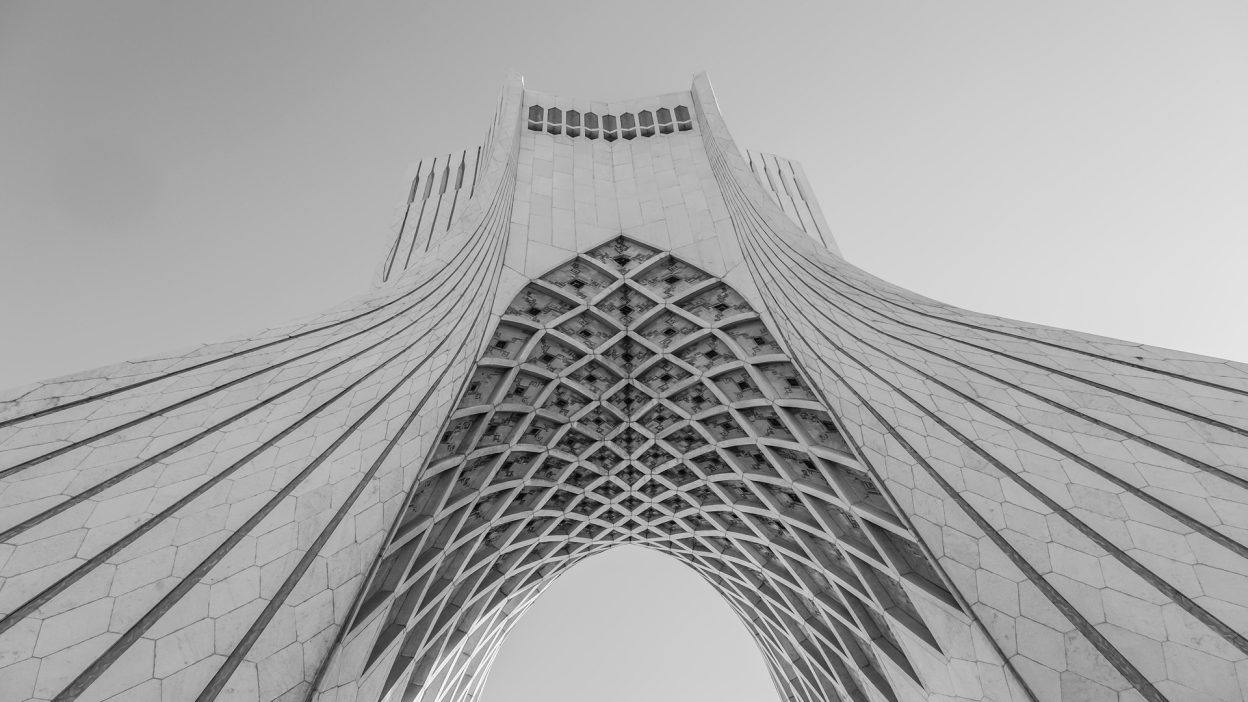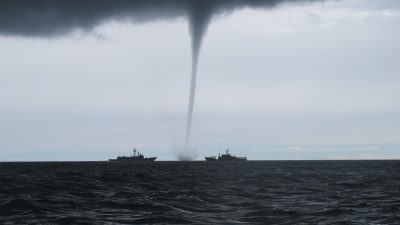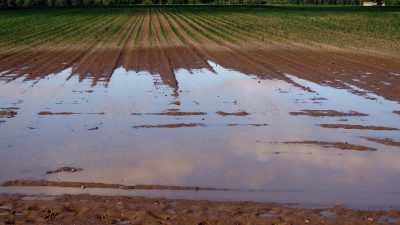When Nature’s Fury Took Over The Country’s Heartland
1. A Night of Horror: The Deadly 1972 Iran Blizzard Strikes Without Warning
The 1972 Iran Blizzard remains one of the most shocking and tragic events in the country’s history. On the 3rd of February, Iran experienced a ferocious snowstorm, unlike any it had encountered before. The storm caught the country completely by surprise, devastating northern regions, especially Tehran, Mazandaran, and Gilan provinces. It wasn’t just a regular snowstorm but a massive blizzard that enveloped the country in blinding snow, turning day into night and causing unimaginable destruction.
The severity of the blizzard was extraordinary, with snowdrifts piling up as high as 6 metres in some areas. For several days, the storm continued to pound northern Iran, leaving residents trapped in their homes and in remote villages, where the snow overwhelmed any existing infrastructure. What made this event even more catastrophic was the suddenness of the storm’s onset. There were no prior warnings, no forecasts of its impending intensity, leaving the people of Iran wholly unprepared for the coming disaster.
As the blizzard ravaged the land, it swept through villages, towns, and cities, bringing everything to a standstill. Roads became completely impassable, and entire communities found themselves stranded under a thick blanket of snow. The authorities were caught off guard, and by the time help arrived, it was often too late for many who had already succumbed to the freezing temperatures or the collapse of their homes. This unexpected fury of nature turned what should have been an ordinary winter into an unforgettable tragedy.
2. Could it Have Been Prevented? The Failures in Early Warning Systems
The question many ask in the aftermath of such a devastating event is whether it could have been avoided. The 1972 blizzard could certainly have been less disastrous if better preparations had been in place. At that time, Iran’s meteorological systems were rudimentary, and there were very few systems in place to predict the intensity of the storm. This lack of forecasting capability contributed significantly to the extent of the damage and loss of life.
In 1972, the country’s weather-monitoring tools were inadequate for tracking severe weather patterns, especially in remote and mountainous regions like Gilan and Mazandaran. Without the advanced satellite technology and sophisticated forecasting systems available today, authorities had no means of knowing the storm’s exact path or its potential intensity. Without early warnings, residents were left vulnerable, with no chance to prepare or evacuate.
Had there been a reliable early warning system, it’s highly likely that lives could have been saved, and damage to infrastructure could have been limited. For instance, people could have been informed about the approaching storm, allowing them to stock up on essential supplies, secure their homes, and avoid being caught outside in the worst of the weather. The lack of preparedness, both at a governmental level and a community level, worsened the impact of the blizzard, and the tragedy serves as a harsh reminder of the importance of weather prediction technology in mitigating the effects of natural disasters.
3. The Blinding Storm: Deaths, Injuries, and the Aftermath of the Blizzard
- Death Toll: The death toll from the 1972 blizzard is estimated to be around 4,000, though some reports suggest the number may have been higher. Most of these deaths occurred in northern Iran, where the snow buried villages and isolated communities. Many individuals froze to death in their homes or while trying to flee from the storm’s unrelenting fury. The remote nature of many of these areas meant that many victims were cut off from help, making rescue efforts extremely difficult.
- Injuries: The blizzard’s impact was not just confined to death but also caused significant injuries. Over 10,000 people were reported to have sustained injuries, many of which were caused by accidents, collapsed buildings, and falling debris. However, some of the most common injuries were the result of extreme cold and frostbite. The lack of timely medical assistance due to the blocked roads and isolation of affected areas meant that many injuries became fatal in the days following the storm.
- Infrastructure Damage: The blizzard wreaked havoc on the country’s infrastructure. Roads and railways were completely blocked, with snowdrifts reaching several metres high in some places. This made rescue operations extremely challenging. Not only was access to the affected areas limited, but the country’s airports were also rendered useless, further impeding the efforts of emergency services. Entire villages were buried under snow, and many homes collapsed under the weight of the snow and ice. Communication lines were also severed, leaving survivors unable to reach help.
- Economic Fallout: Beyond the immediate human toll, the economic damage caused by the storm was severe. The destruction of agriculture in the region, including the loss of crops and livestock, set the region’s economy back for years. Farmers found themselves without the means to support themselves and their families, as the storm wiped out their livelihoods. The infrastructure damage and destruction of homes also made it difficult for people to rebuild, leading to further economic struggles for those who survived.
4. The Tragedy Beyond Numbers: The Untold Suffering of the Victims
While statistics provide a cold and detached understanding of the 1972 Iran Blizzard, they fail to capture the profound emotional and psychological toll that the event had on those who lived through it. The untold suffering of the survivors—especially those who lost loved ones—was far beyond the reach of any number. In the face of overwhelming devastation, many people had to come to terms with the loss of family members, friends, and entire communities.
Personal stories from the disaster paint a harrowing picture of the human cost. Survivors of remote villages describe the heart-wrenching experience of seeing their homes buried under snow, and in many cases, the bodies of loved ones could not be recovered until days or even weeks later. The emotional trauma of such losses was compounded by the fact that the survivors were often left with nothing but memories and despair. The feeling of helplessness and abandonment during the recovery process, as government aid was slow to arrive, left people in a state of hopelessness for months.
The storm not only brought physical destruction but also fractured families, destroyed communities, and deeply impacted the social fabric of northern Iran. Survivors who lost everything faced immense struggles in the aftermath, not just in rebuilding their homes but also in coming to terms with the emotional scars that would never heal.
5. Nature’s Wrath or Government Negligence? The Political Response to the Disaster
The Iranian government’s response to the 1972 blizzard has been heavily criticised. When the blizzard first struck, the lack of a coherent national disaster response plan led to chaos. The central government was slow to mobilise resources, and the emergency services were ill-prepared to deal with the scale of the crisis. Despite the magnitude of the disaster, aid was delayed, and it wasn’t until many days after the storm that relief efforts began to trickle in.
Many critics argue that the government’s slow reaction was compounded by the political instability of the time, with the leadership’s focus more on domestic and political issues rather than on disaster preparedness. By the time the authorities were able to dispatch aid, many of the affected regions had already endured severe damage, with lives lost and infrastructure destroyed. The delay in response only heightened the suffering of those who were trapped or injured. Some relief operations were undermined by a lack of coordination between national, local, and military organisations.
In addition to the logistical issues, the blizzard highlighted the country’s insufficient disaster management systems. At the time, Iran’s emergency infrastructure was rudimentary, and it was clear that there was a lack of planning for such large-scale natural disasters. The government’s negligence in addressing these shortcomings only added to the tragic consequences of the blizzard.
6. Aftermath: Recovery, Rebuilding, and the National Scar Left by the Blizzard
The recovery process after the 1972 blizzard was long, painful, and marked by significant challenges. For those who survived, rebuilding their homes and communities became a monumental task. The destruction caused by the blizzard had left a permanent scar on northern Iran, and it would take years before many regions returned to a semblance of normality. In some of the most severely impacted areas, the rebuilding process was still ongoing for years.
However, it wasn’t just physical reconstruction that was needed—it was also the restoration of hope and normality. The emotional and psychological impact of the disaster lingered long after the last of the snow had melted. For many, the pain of loss, trauma, and the sense of abandonment were not easy to overcome. The lack of mental health support and the slow pace of recovery made the situation even worse.
The national government took some steps to assist with reconstruction, but the scale of the damage meant that it took years before communities fully recovered. Even with the long road to recovery, the disaster left an indelible mark on the collective memory of the nation, serving as a reminder of the fragility of human life in the face of nature’s fury.
7. A Wake-Up Call: How the 1972 Blizzard Became a Lesson in Disaster Preparedness
The 1972 Iran Blizzard acted as a wake-up call for the country, highlighting the urgent need for improved disaster preparedness and early warning systems. In the aftermath of the storm, it became clear that Iran’s infrastructure, response systems, and capacity to handle natural disasters were inadequate. This disaster served as a pivotal moment for the country to reassess its disaster response frameworks and take necessary steps towards ensuring such a catastrophe would not catch the nation off-guard again.
One of the key lessons learned was the importance of meteorological services. In the years that followed, the Iranian government made significant investments in upgrading weather prediction technology and improving the ability to forecast and track severe weather events. Enhanced forecasting techniques, such as more advanced satellite data and weather radar, became central to disaster preparedness. This progress helped the country to avoid a repeat of the unpreparedness witnessed during the 1972 blizzard. Additionally, emergency response services became more coordinated, with better communication lines established between local, regional, and national authorities.
This disaster also prompted greater international collaboration. Iran sought aid from neighbouring countries and organisations to rebuild the affected regions. This collaboration laid the groundwork for future cooperation on disaster management and mitigation, demonstrating that global solidarity is essential in times of crisis.
8. Unseen Heroes: The Remarkable Acts of Survival and Community Spirit
Amid the chaos and devastation caused by the 1972 Iran Blizzard, countless individuals showed extraordinary resilience and courage. Despite the immense challenges posed by the storm, many people risked their own lives to help their neighbours, even when the situation seemed hopeless. Survivors and rescuers became unsung heroes, performing extraordinary acts of bravery that highlighted the strength of the human spirit in the face of overwhelming adversity.
In some communities, people banded together to dig out their homes and save trapped individuals, even as the storm raged on. In the worst-hit areas, where the snow buried entire villages, local rescue teams made up of civilians, military personnel, and volunteers worked tirelessly to search for survivors. These efforts were often carried out with limited resources, as vehicles and heavy machinery could not reach many of the affected areas. Despite these limitations, many survivors owe their lives to the selflessness and determination of those who refused to give up.
Local communities exhibited incredible solidarity, and this spirit of cooperation became a defining feature of the aftermath of the blizzard. Neighbours helped each other clear snow from their homes, share food, and support the injured. The resilience of the Iranian people during such a devastating event is something that continues to be remembered and celebrated, as their actions provided hope and humanity during a dark time.
9. Conclusion: Remembering the 1972 Blizzard and Its Lasting Impact on Iran
The 1972 Iran Blizzard remains one of the most significant natural disasters in the history of the country, leaving a lasting legacy on both the affected regions and the nation as a whole. The storm’s impact went far beyond the physical destruction it caused, as it shaped the way Iran approaches disaster preparedness and response today. The lessons learned from this catastrophe continue to influence policies and practices, ensuring that future generations will be better equipped to handle similar events.
Though the immediate recovery was arduous and painful, the collective memory of this event has become an integral part of Iran’s national history. The resilience and unity displayed by the people of Iran during this time serve as a reminder of the importance of community in overcoming such challenges. Additionally, the improvements in infrastructure and emergency systems that followed the disaster have ensured that future generations will be less vulnerable to the fury of nature.
Ultimately, the 1972 Iran Blizzard serves as both a tragic chapter in the country’s history and a catalyst for change, sparking advancements in disaster management and resilience. While the scars of that time remain, Iran’s response to the event laid the foundation for a stronger, more prepared nation, capable of weathering even the harshest storms.
5 Short FAQs about the 1972 Iran Blizzard
1. How many people died in the 1972 Iran Blizzard?
The death toll from the blizzard is estimated to be around 4,000 people, with many more injured and affected by the storm’s devastating impact on infrastructure.
2. What caused the 1972 Iran Blizzard?
The blizzard was a result of unusually cold temperatures and a massive snowstorm that hit Iran’s northern regions, including the Mazandaran, Gilan, and Tehran provinces, causing severe snowdrifts and extreme weather conditions.
3. Was the Iranian government prepared for the 1972 Blizzard?
No, the government was caught off guard by the storm, and there were significant failures in disaster management, including inadequate weather forecasting and slow response times to rescue efforts.
4. How did local communities respond to the storm?
Local communities showed remarkable solidarity by working together to clear snow, dig out homes, and rescue trapped individuals, with many risking their lives to help others in the face of the blizzard.
5. What lessons were learned from the 1972 Iran Blizzard?
The disaster highlighted the importance of early warning systems, disaster preparedness, and coordinated rescue efforts, leading to improvements in Iran’s weather forecasting technology and national disaster management systems.




